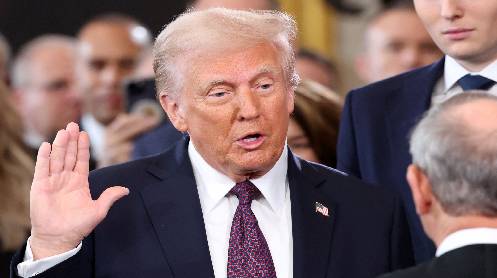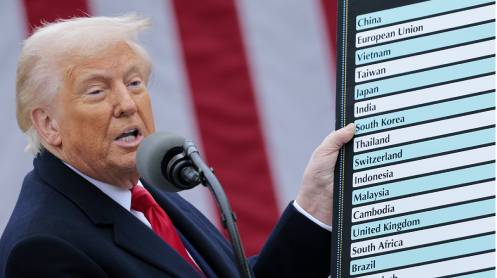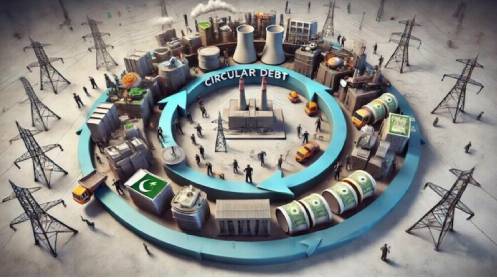Former U.S. President Donald Trump has imposed a 10% tariff on most imports and significantly higher duties on numerous countries, further intensifying a global trade war that threatens economic stability.
Announced in the *White House Rose Garden, the sweeping tariffs rattled financial markets and drew sharp criticism from world leaders. *Forbes reported that the U.S. has imposed a *29% reciprocal tariff on Pakistan, responding to Pakistan’s *58% tariff on U.S. goods.
The move caused *Japan’s Nikkei to hit an eight-month low, while **U.S. and European stocks tumbled, erasing nearly *$5 trillion in value since mid-February*. China, already facing **20% tariffs, was hit with an additional *34% duty and vowed retaliatory measures.
Key Tariff Rates:
- India: 26% (with exemptions for pharmaceuticals)
- European Union: 20%
- Japan: 24%
- Mexico & Canada: Already facing 25% tariffs, no new increases
The *base 10% tariffs take effect on April 5, while higher reciprocal rates start on April 9. Analysts warn that the **U.S. import tax rate has surged to 22%, levels last seen in **1910, with potential *global recession risks.
Trump defended the tariffs as necessary to *restore U.S. manufacturing, stating, *“Our country has been looted by nations, both friend and foe.”* However, critics argue the move will *raise consumer costs and slow economic growth.
The U.S. also closed a trade loophole allowing duty-free imports of low-value goods from China and Hong Kong, aiming to *curb fentanyl trafficking. Additional tariffs on *semiconductors, pharmaceuticals, and critical minerals are also under consideration.
Despite concerns, Trump’s economic advisor, *Stephen Miran, insisted that **short-term disruptions would lead to long-term benefits. However, **European leaders warn of retaliatory action, with *Italy’s Prime Minister Giorgia Meloni calling for a resolution to avoid economic damage.
With political and economic uncertainty growing, the global impact of Trump’s aggressive trade policies remains to be seen.





